TB NOTES

TB Notes 5, October 2018
Notes from the Director
Dear Colleague:

The Division of Tuberculosis Elimination (DTBE) has been involved in many exciting events. On September 26, 2018, the United Nations General Assembly held the first-ever High Level Meeting focused on ending TB globally. CDC leadership and global leaders met to discuss the need for increased efforts to test and treat persons with latent TB infection to prevent TB disease. CDC continues to be at the forefront of researching new diagnostics and treatment for TB, with our global efforts informed and strengthened by our domestic accomplishments. Learn more about this important meeting later in this edition.
DTBE staff recently traveled to Saipan and the Commonwealth of the Northern Mariana Islands, September 2-15. In Saipan, staff conducted a three-day training on the 2020 Report of Verified Case of Tuberculosis (RVCT) and attended the Pacific Islands TB Controllers Association (PITCA) Conference, where TB professionals, clinicians, and partners shared their cross-cutting and disease-specific expertise in TB. DTBE staff also met with the Commonwealth Healthcare Corporation (CHCC) and discussed TB control and prevention activities funded through CDC NOFO PS18-1801, “Accelerating the Prevention and Control of HIV/AIDS, Viral Hepatitis, STDs and TB in the U.S. Affiliated Pacific Islands.”
The 2018 TB Education and Training Network (ETN) and the TB Program Evaluation Network (PEN) Conference, Breaking through Barriers to Achieve TB Elimination, was held September 18-20, in Decatur, Georgia. This year’s conference highlighted common aspects of TB education, training, and evaluation. Presentations focused on how TB education, training, and evaluation play key roles in removing the barriers preventing elimination of TB in the United States. TB survivors shared their journeys through diagnosis, treatment, and advocacy. The conference was a wonderful opportunity to network and learn from colleagues.
We find ourselves at a critical moment in the fight against TB. The time is now for us to come together, spur innovation, and invest in cutting-edge science and programs to defeat TB here in the United States and around the world.
Philip LoBue, MD, FACP, FCCP
Director
Division of Tuberculosis Elimination
National Center for HIV/AIDS, Viral Hepatitis, STD, and TB Prevention
10th International Conference on Emerging Infectious Diseases
CDC hosted the 10th International Conference on Emerging Infectious Diseases in Atlanta, Georgia, August 26–29, 2018. Many scientists in the TB community took part in this conference of over 1500 attendees.
On August 29, DTBE presented a panel session titled, “Make History: End TB” at the conference. Speakers included:
Jonathan Wortham, MD, Lead of the Outbreak Investigations Team, DTBE. Jonathan gave an overview titled,”Tuberculosis Outbreaks in the United States: A National Perspective.”
Pam Barrett Scanlon, LBSW, CPM, Tuberculosis Controller, Alabama Department of Public Health, spoke about experiences with a “Tuberculosis Outbreak in Perry County, Alabama, and the Implementation of Interventions to Contain.”
David Dowdy, MD, PhD, Associate Professor of Epidemiology at the Johns Hopkins Bloomberg School of Public Health, presented “Using Models of Transmission to Prioritize Action in the Fight to End Tuberculosis.”
Payam Nahid, MD, Professor of Medicine at the University of California San Francisco described “New and Repurposed Drugs for Drug-Resistant Tuberculosis.”
In a separate session on Genomic Epidemiology, Ben Silk, PhD, Lead of the Molecular Epidemiology Activity Team, DTBE, presented, “Data Integration and Visualization for Tuberculosis Outbreak Investigations.”
Submitted by Carla Winston, PhD, MA, DTBE
United Nations General Assembly first-ever High Level Meeting on Tuberculosis
On September 26, 2018, the United Nations General Assembly held the first-ever High Level Meeting (UN HLM) focused on ending TB globally. The UN General Assembly (UN GA), the main decision-making body
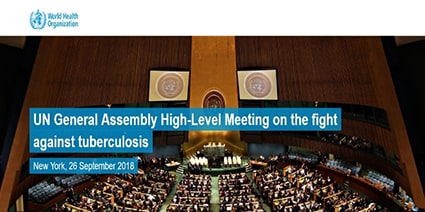
of the UN representing all 193 UN Member States, convenes UN HLM. Agreement to hold a dedicated UN HLM on a specialized topic is taken in exceptional circumstances through a UN resolution and vote. The UN HLM on TB was the fifth time the UN has called for a high-level meeting devoted to a health issue, the first being the 2001 Special Session on HIV/AIDS, followed by UN HLMs on Non-Communicable Diseases, Ebola, and Antimicrobial Resistance. It is the most significant political meeting ever held on TB. The meeting resulted in a Political Declaration on TB endorsed by Heads of State that will form the basis for the future TB response. We hope this will lead to a coordinated global response and lead to millions of lives saved from premature deaths from TB.
CDC Foundation hosted a TB High Level Meeting Side Event, Preventing TB to End TB. This session was an opportunity for national leaders to discuss commitments needed to end TB, specifically by increasing efforts to test and treat for latent TB infection The U.S. Secretary of Health and Human Services, Alex M. Azar II and CDC Director, Dr. Robert Redfield were present and shared remarks.
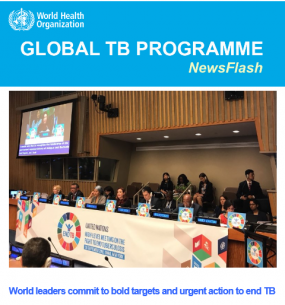
Secretary Azar stated to participants at the meeting: “Domestically, we hope our TB program can be a model for the world. The United States has one of the lowest case rates globally, in 2017 reporting just 9,000 cases of TB. Over the past two decades, U.S. TB control efforts have prevented an estimated 319,000 cases of TB and averted $14.5 billion in healthcare and social costs. But our efforts still can be improved. More than 80 percent of TB disease in the United States resulted from long-standing, untreated latent TB. Approximately 13 million people in the United States have the latent form of the disease, and without treatment, they are at risk for developing active TB. To eliminate TB, we will need to increase capacity to diagnose and treat people facing this issue.” The meeting provided an opportunity to showcase the U.S. commitments and achievements to domestic and global TB.
Submitted by Nick DeLuca, PhD, DTBE
New Spanish Whiteboard Video
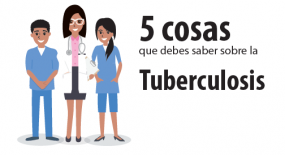
DTBE is excited to debut a new Spanish version of the, “5 Things to Know About TB.” The video highlights the continuing problem of TB in the United States and the importance of addressing latent TB infection though targeted testing and treatment. The video was created for a general audience and can be shared on websites and social media platforms.
Submitted by Sloane Bowman, MPH, DTBE
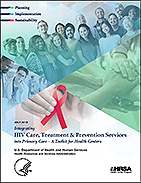
New HRSA Toolkit Supports Health Centers in Expanding HIV Services
HRSA released a new toolkit for HRSA-funded health centers on how to integrate HIV care, treatment, and/or prevention services into their primary care services. The toolkit shares the lessons learned and resources from 22 health centers that participated in the Partnerships for Care (P4C) demonstration project.
Submitted by Sloane Bowman, MPH, DTBE
TB Education and Training Network (TB ETN) and TB Program Evaluation Network (TB PEN) Conference
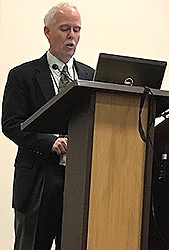
Breaking Through Barriers to Achieve TB Elimination
The Tuberculosis Education and Training Network (TB ETN) and the Tuberculosis Program Evaluation Network (TB PEN) Conference was held September 18-20, 2018 at the Marriot Courtyard in Decatur, Georgia. The theme of the 2018 conference was Breaking Through Barriers to Achieve TB Elimination. The TB ETN PEN Conference emphasized the steps of the systematic health education process and program evaluation planning and implementation. Conference activities included skills-based workshops, informational presentations, and networking opportunities. Over two hundred and twenty-five participants attended the conference. Participants included TB education and training and program evaluation specialists from TB control programs throughout the United States and U.S.-affiliated Pacific Islands, federal and international TB control program staff, and other public health professionals.
The two and a half day conference included a variety of dynamic sessions including the opening plenary delivered by Dr. LoBue, Director of the CDC Division of TBElimination. Dr. LoBue emphasized eliminating TB through approaches that address both TB disease and latent TB infection (LTBI). He noted available LTBI education products and discussed the role of evaluation in addressing TB and LTBI. Dr. LoBue also updated participants on progress made towards the National TB Program Objectives and Performance Targets for 2020. Another plenary highlighted TB survivors who shared their journeys through diagnosis, treatment, and advocacy. The survivors discussed their work with We Are TB and the impact of their advocacy on others.
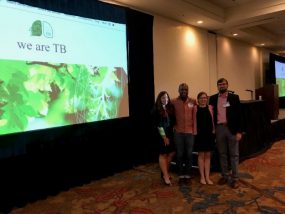
Other conference highlights included sessions on building partnerships, communications tools and strategies, intermediate program evaluation, tools for TB electronic directly observed therapy (eDOT), economic costing, designing data collection instruments, and using the Surveillance for TB Elimination Management System (STEMS) application. Speakers included experts in TB education, training, and evaluation at the local, state, and national levels.
The conference also hosted a scientific poster session with twenty-nine abstracts accepted. Authors from four abstracts (two focused on TB education and training and two focused on TB program evaluation) were invited to give oral presentations. The four abstracts selected for oral presentations were:
- The Medium Is the Message: Effective TB Education through Creative and Culturally Agile Education Materials – Multnomah County, Oregon, presented by Meredith Jones (Oregon)
- What Do We Need To Do Next? Training TB Program Staff in California, presented by Cathy Miller (California)
- Screening for Latent Tuberculosis Infection among Students in a California Public University, presented by Melissa Ehman (California)
- Evaluation of Contact Examination in Massachusetts, 2017, presented by Laura Smock (Massachusetts)
TB Education and Training Network (TB ETN) Awards
This conference marked the seventh year for the TB Educator of the Year Award and TB Project Excellence Award. Established in 2010, these awards recognize excellence in TB health education and training by TB ETN members around the world. The TB Educator of the Year award recognizes an individual who has shown dedication and leadership in the field of TB education, training, and communication. There were many outstanding nominations and the winner selected for this year’s award was Clarissa Felima.
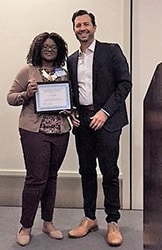
Clarissa is a TB health educator at the South Carolina Department of Health and Environmental Control and serves as the TB program’s Training and Education Focal Point. Since joining the program in 2016, Clarissa has shown great dedication and leadership to the field of TB education, training, and communication. A few examples of Clarissa’s work include coordinating TB Today! an annual course for healthcare workers who provide services to TB patients, and Advanced TB Today!, which is designed for experienced TB program staff. She also recently organized a TST workshop called Place It. Read It. Act! that was designed to help participants learn how to properly administer, read, and interpret a TST. Clarissa organized activities to commemorate World TB Day as well. Additionally, Clarissa has begun an educational initiative regarding TB among African Americans. As part of this effort, she created a poster that is distributed to agencies across the state and she is working to build partnerships with internal and external organizations.

The Project Excellence award recognizes exceptional health education and training products or activities that have been developed by TB ETN members within the past 2 years.
The 2018 TB Project Excellence Award went to “Tubercules Learns How You Get Tested for TB.” This video was developed by the Metro Public Health Department in Nashville, TN and the lead for the project was Amber Coyne.
The “Tubercules” video provides a tour of the Nashville TB clinic and includes interviews with key program staff. The program created the video because they felt that many individuals who visit the TB clinic do not know what to expect, and this fear can be a barrier to TB elimination. To help ease these fears, the program developed a light-hearted film featuring a TB superhero named “Tubercules.” Throughout the video, Tubercules zooms through the Nashville TB clinic interacting with the key players as she gets tested. On her journey, Tubercules learns the difference between LTBI and TB disease, and the wide range of services offered by the TB program.
The video provides viewers with a sense of what the process looks like from the moment a patient walks in the door to the initiation of treatment. This film is intended to be played at community events and in the TB clinic waiting area. Congratulations to the 2018 award winners!
Submitted by Carissa Sera-Josef, MSHE, CHES DTBE
Texas Tuberculosis Binational Program – A Successful Public Health Intervention Strategy
In 2016, the incidence rate of TB in the United States (US) was 3.1 per 100,000 persons, 4.5 per 100,000 persons in Texas, and along the Texas/Mexico border, as high as 9.5 per 100,000 (Hidalgo county).1
The estimated prevalence of latent TB infection in the United States as measured by a positive interferon gamma release assay test ranges from 2.8% in US born persons to 15.9% in non-US born persons. The increased risk of exposure from high incidence locations and mobility of populations at the Texas/Mexico border are significant determinants for latent TB infection and disease. Differences in reporting, case detection, and treatment practices in Mexico and Texas affect these rates.
The Texas Department of State Health Services (DSHS) through funding from CDC supports four binational TB programs that serve high incident areas along the Texas/Mexico border. They are: Los Dos Laredos in Nuevo Laredo, Mexico; Grupo Sin Fronteras serving both Matamoros and Reynosa, Mexico; Proyecto Juntos in Cuidad Juarez, Mexico; and Esperanza y Amistad serving both Piedras Negras and Acuna, Mexico. Clients receiving services through any of the four binational programs must meet at least one of the following criteria:
- The client lives in Mexico but has relatives in the US;
- The client has dual residency in the US and Mexico;
- The client has contacts on both sides of the border, in the US and Mexico;
- The client starts treatment in the US but returns to live in Mexico; or
- The client is referred from the US for treatment or follow-up in Mexico.
The binational TB programs provide for continuity of TB care services to interrupt transmission of TB disease. Many patients receiving care through the binational TB program have medical risk factors that complicate care. These issues are addressed by referring patients to local providers in Mexico to receive treatment for diabetes, HIV, thyroid diseases, and other medical conditions. Heartland National TB Center (HNTC), a CDC-funded Center of Excellence, provides expert medical consultations. Consultations are held monthly at each binational TB program site using teleconferencing technology. This allows for remote patient case reviews and collaborative outreach and training.
The DSHS Laboratory performs all mycobacteriology testing for specimens received from the binational programs. This includes testing for acid-fast bacilli smears and culture, and drug susceptibility including applying rapid testing technology to identify persons with TB disease. Binational TB isolates are also sent to the CDC contracted laboratory for genotyping. Binational TB program coordinators have access to TB Genotyping Information Management System (GIMS) to identify and monitor concerning clusters that may have binational links. This creates a robust program for Texas in the continuous effort to decrease the spread of TB along the Texas/Mexico border.
Lieutenant Commander (LCDR) Angelica Martinez, US Public Health Service, assigned by CDC to the Texas DSHS has served as the project officer to the binational TB programs since May 2015. She has streamlined activities among the four programs and increased collaboration between Texas and public health partners in Mexico. In 2018, she implemented interferon-gamma release assay testing at all binational program sites. Infected contacts receive care through the binational TB program because treatment for latent TB infection is not offered in the public sector of Mexico.
The future of the binational programs in Texas is looking strong. Capacity building efforts such as video technology to support directly observed therapy are being explored. Additionally, the feasibility of supporting physician services at each site is also being evaluated. Currently, the program supports physician services at two of the four binational TB programs. The DSHS TB Program is also developing an electronic case management and surveillance tool that will include the collection and analysis of binational TB case data.
Submitted by Angelica Martinez, MT, BS, Sandra Morris, MPH, Melissa Davis, RN, BSN, MS, Veronica Dominguez, RN, MSN, Glenda Lopez, Lupe Gonzalez, Sharmily Roy, MPH, CHES
1 Texas TB Surveillance Report 2016 Annual Report.
2 Miramontes R, Hill AN, Yelk Woodruff RS, et al. Tuberculosis Infection in the United States: Prevalence Estimates from the National Health and Nutrition Examination Survey, 2011-2012. García-García J-M, ed. PLoS ONE. 2015;10(11):e0140881. doi:10.1371/journal.pone.0140881.
3 MacPherson DW, Gushulak BD, Baine WB, et al. Population Mobility, Globalization, and Antimicrobial Drug Resistance. Emerging Infectious Diseases. 2009;15(11):1727-1731. doi:10.3201/eid1511.090419.
Laboratory Branch Achieves Accreditation
In early 2015, the Office of the Associate Director for Laboratory Science and Safety (OADLSS) at CDC, was one of five pilot laboratories tasked with seeking ISO17025 accreditation. This accreditation is the general requirements for the competence of testing and calibration laboratories. The Laboratory Branch’s (LB) efforts were led by the Quality Manager, Lois Diem, and involved a high-level of commitment, support, and effort from branch leadership and team-level Quality Management System (QMS) POCs. LB built on an already existing robust QMS to achieve this accreditation and worked diligently to ensure that specifications were rolled-out to encompass quality essentials for the work of the entire branch. The Reference Laboratory Team, under the leadership of Beverly Metchock, contributed extraordinary effort to bring a CLIA-compliant assay under the technical scope of accreditation. These overarching efforts required frequent strategy and review meetings, gap analyses, constant communication with contractors within OADLSS, revision and development of branch-wide and team-specific standard operating procedures as well as the deployment of a new electronic document management system. Procedures and associated documentation were required to meet ISO requirements for a wide variety of activities that contribute to quality including purchasing, customer satisfaction, communication, equipment maintenance, environmental controls, sample accessioning, technical procedures, quality control, test reporting, training and competency, etc. These activities were completed as a result of a tremendous team effort and countless hours of work.
On May 15–16, 2018, LB was assessed by the American Association for Laboratory Accreditation (A2LA) for ISO17025 Accreditation. After two days, the assessor found no deficiencies whatsoever with LB’s QMS or test under scope. The assessor gave high praise to the laboratory staff and conveyed that having zero findings is almost unheard of following an initial assessment. The accreditation would not have been possible without the support and dedication of this team.
Retirement of Denise Hartline, BS, MT (ASCP) – Microbiologist
Denise Hartline, BS, MT (ASCP), a Microbiologist in the Division of Tuberculosis Elimination, Laboratory Branch, retired on June 30, 2018. Since 2008, Denise has served as an integral member of the Reference Laboratory Team (RLT) under the direction of Dr. Beverly Metchock. Prior to working at CDC, Denise was an assistant manager in the Mycobacteriology Laboratory at the Georgia Department of Public Health. Denise also spent some time at Emory University Hospital in the Clinical Microbiology Laboratory. Denise’s primary focus in RLT was growth-based drug susceptibility testing and preparing samples for the Molecular Detection of Drug Resistance Service. She took great pride in her work and will always be remembered for her willingness and enthusiasm to go above and beyond to help others. Denise is a true team player. She was a tremendous asset to the laboratory and public health, both locally and nationally. In retirement, Denise plans to spend more time with her grandchildren, continue volunteering with the Georgia Native Plant Society, and enjoy the great outdoors with her husband.
Submitted by Tracy Dalton, PhD and Beverly Metchock, DrPH, D (ABMM), DTBE
The Latest News from the TB Trials Consortium (TBTC)
TBTC Study 31, Rifapentine-containing treatment shortening regimens for pulmonary tuberculosis: A randomized, open-label, controlled phase 3 clinical trial, continues to enroll. As of August 21, 2018, the study had a total of 2,300 participants, 92% of target enrollment.
TBTC Study 37, ASTERoiD: Assessment of the Safety, Tolerability, and Effectiveness of Rifapentine given Daily for LTBI) to evaluate novel ultra-short (6 weeks) LTBI treatment regimen. This is a collaboration with the TB Epidemiologic Studies Consortium and Medical Research Council (United Kingdom) for a 3400-patient, open-label, randomized controlled trial. Participating sites are working on completing the start-up requirements. The protocol leads have initiated a monthly conference call for all participating sites. Enrollment into the trial is expected to begin late 2018.
TBTC Study 35, Phase I/II dose finding and safety study of rifapentine and isoniazid in HIV-infected and HIV-uninfected children with latent tuberculosis infection. The protocol team, Data and Coordinating Center staff, and Sanofi are working towards an investigational new drug (IND) application to FDA for the new child-friendly rifapentine formulation to be used in Study 35. This study will be implemented at two sites in South Africa.
The next semi-annual TBTC meeting will take place December 5-7, 2018 at the Courtyard Marriott hotel located in Decatur, GA. Those interested in attending should contact Ms. Barbara DeCausey (404-639-5330; tbtcresearchadmin@cdc.gov).
Submitted by Barbara DeCausey, MPH, MBA, DTBE
TB Modeling Tool Shows Potential Impact of Improvements in TB Prevention
Through the National Center for HIV/AIDS, Viral Hepatitis, STD, and TB Prevention’s cooperative agreement for epidemiologic and economic modeling, NEEMA, Harvard University’s Prevention Policy Modeling Lab in collaboration with the CDC Division of Tuberculosis Elimination developed a web tool, Tabby, for predicting TB trends in the United States. This tool can be used to understand the possible trajectory of TB cases, TB deaths, latent TB infection prevalence, and other outcomes for the population overall as well as for specified subpopulations by age and nativity. The tool allows users to pick several scenarios to compare, each describing strengthening one aspect of TB services. The tool is based on a recently published modelling study1, in which the researchers found that while the United States is unlikely to reach TB elimination before the end of the century without intensification of TB prevention and control activities, improvements in TB services, particularly escalations in latent TB infection treatment, could substantially increase rates of TB decline. More aggressive prevention and treatment (all modeled scenarios together) could reduce TB incidence in 2050 by 77% from 2016 levels.
Nick Menzies, PhD, Harvard University; Suzanne Marks, MPH, MA, and Andrew Hill, PhD, DTBE
1 Menzies NA, Cohen T, Hill AN, Yaesoubi R, Galer K, Wolf E, Marks SM, Salomon JA. Prospects for Tuberculosis Elimination in the United States: Results of a Transmission Dynamic Model. American Journal of Epideneemamiology. 2018. https://www.ncbi.nlm.nih.gov/pubmed/29762657
To receive the TB Notes Newsletter, enter your email address at the bottom of the TB Notes webpage. If you would like to submit an article or update in TB Notes, please email Sloane Bowman at wnv2@cdc.gov.
You can follow us on Twitter @CDC_TB and Facebook @CDCTB and sign up for email here.
Borisov AS, Bamrah Morris S, Njie GJ, Winston CA, Burton D, Goldberg S, Yelk Woodruff R, Allen L, LoBue P, Vernon A. Update of recommendations for use of once-weekly isoniazid-rifapentine regimen to treat latent Mycobacterium tuberculosis infection. MMWR Morb Mortal Wkly Rep 2018;67:723–6.
Brown-Elliott BA, Simmer PJ, Trovato A, Hyle EP, Droz S, Buckwalter SP, Borroni E, Branda JA, Iana E, Mariottini A, Nelson J, Matteelli A, Toney NC, Scarparo C, de Man TJB, Vasireddy R, Gandhi RT, Wengenack NL, Cirillo DM, Wallace RJ, Tortoli E. Mycobacterium decipiens sp. nov., a new species closely related to the Mycobacterium tuberculosis complex. Int J Syst Evol Microbiol 2018. Epub ahead of print.
Colangeli R, Jedrey H, Kim S, Connell R, Ma S, Chippada Venkata UD, Chakravorty S, Gupta A, Sizemore EE, Diem L, Sherman DR, Okwera A, Dietze R, Boom WH, Johnson JL, Mac Kenzie WR, Alland D; DMID 01-009/Tuberculosis Trials Consortium Study 22 Teams. Bacterial factors that predict relapse after tuberculosis therapy. N Engl J Med 2018; 379:823–33.
Kandler JL, Mercante AD, Dalton TL, Ezewudo MN, Cowan LS, Burns SP, Metchock B; Global PETTS Investigators, Cegielski P, Posey JE. Validation of novel Mycobacterium tuberculosis isoniazid resistance mutations not detectable by common molecular tests. Antimicrob Agents Chemother 2018;pii:AAC.00974–18. Epub ahead of print. (Ezewudo, also with Critical Path Institute).
Lardizabal AA, Khan AN, Bamrah Morris S, Goswami ND. Notes from the field: acquisition of delamanid under a compassionate use program for extensively drug-resistant tuberculosis—United States, 2017. MMWR Morb Mortal Wkly Rep 2018; 67:996–7.
Parriott A, Malekinejad M, Miller AP, Horvath H, Marks SM, Kahn JG. Yield of testing and treatment for tuberculosis among foreign-born persons during contact investigations in the United States: a semi-systematic review. PLoS One 2018;13:e0200485.
Schmit KM, Lobato MN, Lang SG, Wheeler S, Kendig NE, Bur S. High completion rate for 12 weekly doses of isoniazid and rifapentine as treatment for latent Mycobacterium tuberculosis infection in the Federal Bureau of Prisons. J Public Health Manag Pract 2018. Epub ahead of print.
Shete PB, Boccia D, Dhavan P, Gebreselassie N, Lönnroth K, Marks S, Matteelli A, Posey DL, van der Werf MJ, Winston CA, Lienhardt C. Defining a migrant-inclusive tuberculosis research agenda to end TB. Int J Tuberc Lung Dis 2018;22:835–43.
Stout JE, Wu Y, Ho CS, Pettit AC, Feng PJ, Katz DJ, Ghosh S, Venkatappa T, Luo R; Tuberculosis Epidemiologic Studies Consortium. Evaluating latent tuberculosis infection diagnostics using latent class analysis. Thorax 2018. Epub ahead of print. (Wu, Northrop Grumman, Inc., assigned to DTBE).
Wortham JM. TB anywhere is TB everywhere. Isr J Health Policy Res 2018;7:40